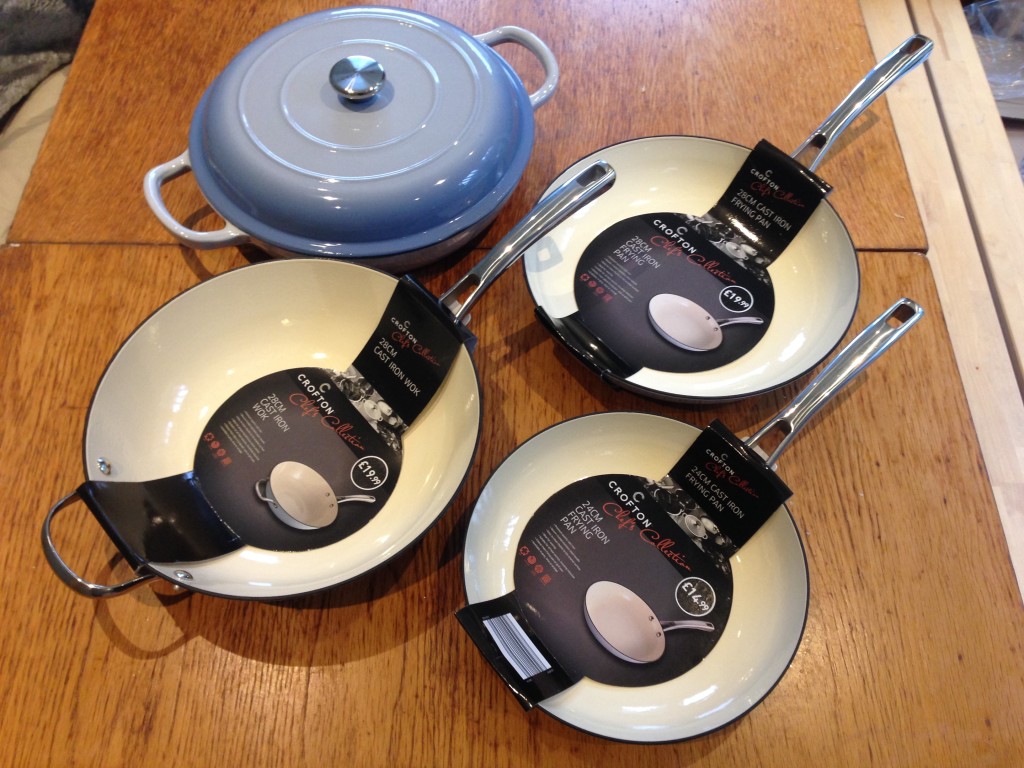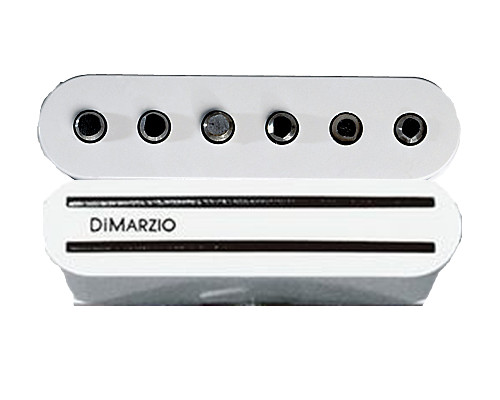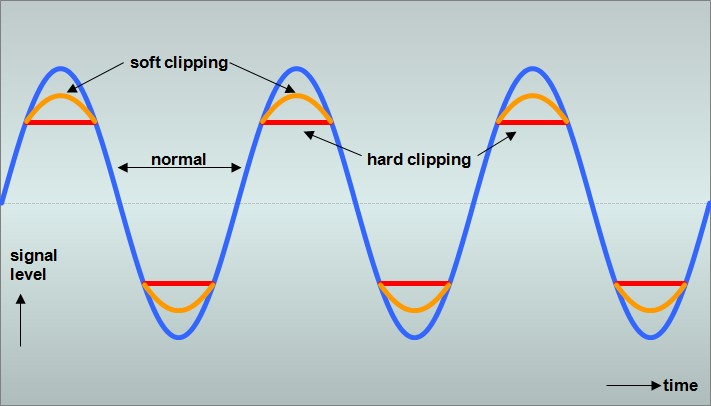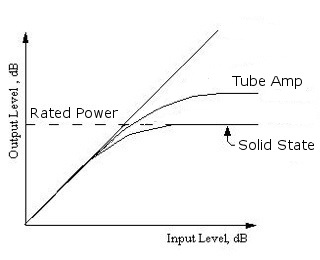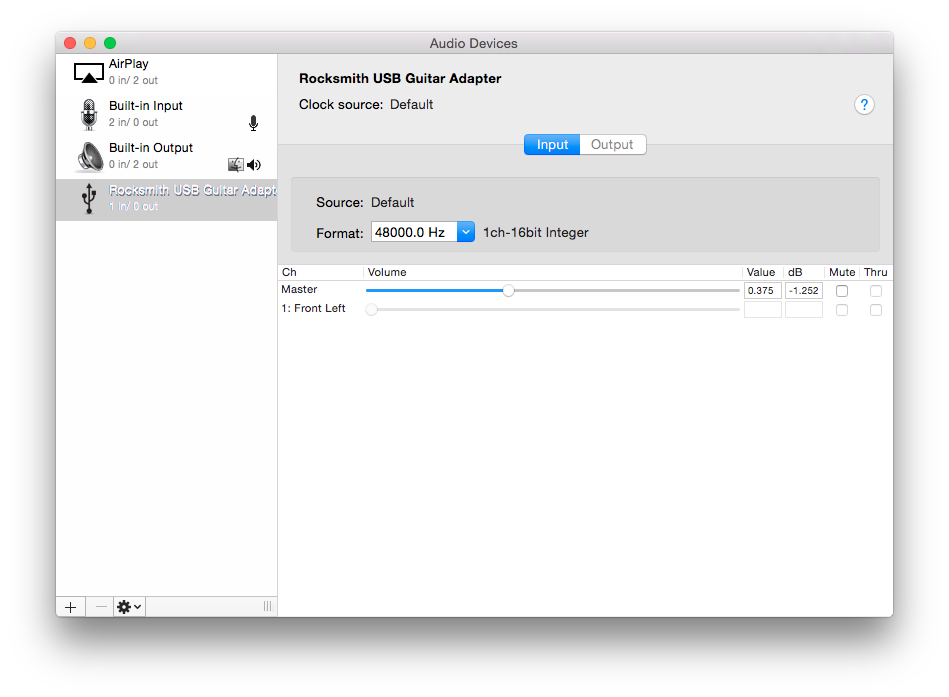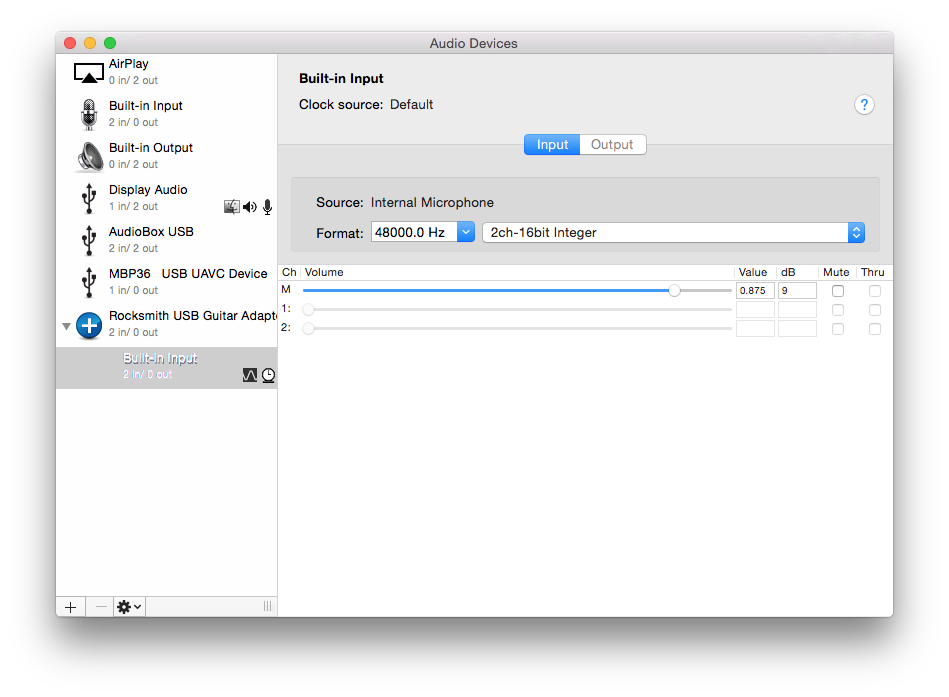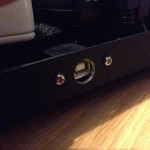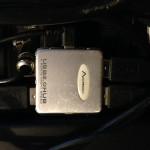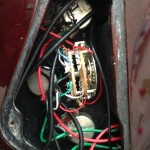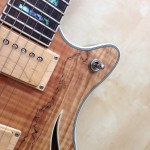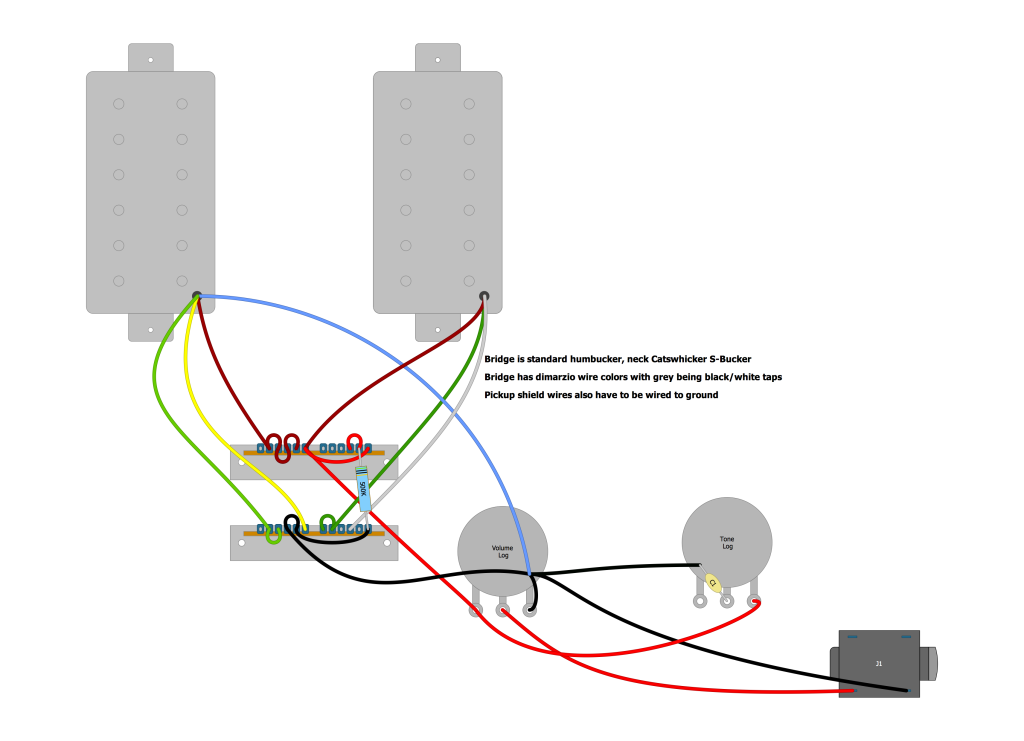Aldi Crofton Cast Iron Enamel Cookware
I’ve been looking for some non aluminium/non ptfe frying pans for a while. I’ve found stainless steel stick too much, and it’s too hard to keep them seasoned all the time. I also tried ceramic coated stainless steel, but these were expensive and still didn’t last that long.
Eventually realised it’s worth paying for cast iron enamel cookware, but this is normally really pricey. However this week Aldi have their 2015 range of cast iron enamel cookware on special. I ended up getting the 28cm frying pan, 24cm frying pan, 28cm wok and 30cm shallow casserole to add to my two Le Creuset casserole dishes. While the quality is never going to be on par with Le Creuset, they still feel very solid, have stainless steel riveted handles that stay cool, and a decent thickness of enamel.
Cooked with them today, and the surface doesn’t stick too much with some oil. They’re also a little lighter than other cast iron cookware, which is maybe why they’re cheaper. It does make them slightly easier to handle, although their still noticeably heavier than stainless steel or aluminium cookware.
Overall very pleased, and I think they’re worth the money. They should certainly last longer than the ceramic or other nonstick pans I’ve used in the past.
